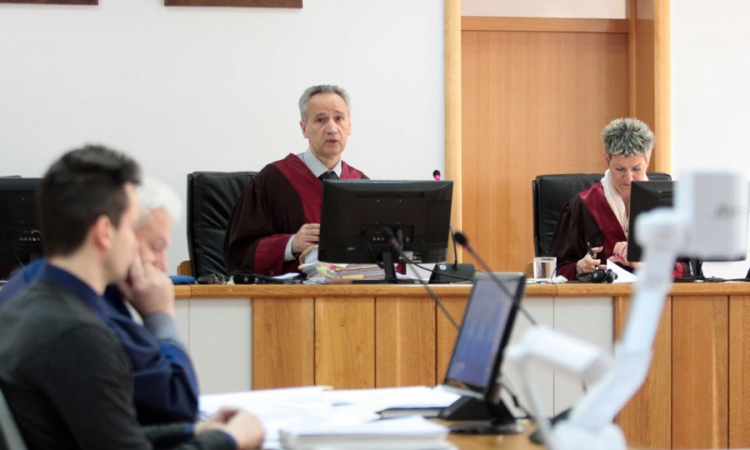Architecture's Identity Crisis: A Conversation On Virtue Signalling And Its Impact

Table of Contents
The Rise of Virtue Signaling in Architecture
The pressure to demonstrate social responsibility and environmental stewardship is immense in the architectural world. However, this pressure has led to a rise in "virtue signaling"—actions intended to project a positive image rather than effect genuine change. This section delves into the key areas where this trend is most apparent.
Greenwashing vs. Genuine Sustainability
Greenwashing, the practice of making misleading or unsubstantiated claims about the environmental benefits of a product or service, is rampant in the architectural industry. Architects might use cheap, unsustainable materials while marketing a building as "eco-friendly," creating a deceptive façade of environmental responsibility.
- Examples of greenwashing in architectural projects: Using rapidly renewable materials that lack durability, claiming "sustainable" design without providing supporting documentation (e.g., LEED certification), marketing energy-efficient features that are overshadowed by excessive energy consumption from other building systems.
Transparency is key to combating greenwashing. Openly communicating material sourcing, construction practices, and performance data builds trust and ensures accountability. Genuine sustainable building design incorporates strategies such as:
-
Key indicators of genuine sustainability initiatives: LEED certification, passive design strategies (maximizing natural light and ventilation), the use of recycled and locally sourced materials, implementation of renewable energy sources, and comprehensive lifecycle assessments.
-
Benefits of transparent building practices: Increased public trust, improved building performance, reduced environmental impact, and stronger brand reputation.
Social Responsibility and Architectural Design
Architectural design has a profound impact on society. Ethical considerations extend beyond aesthetics and functionality to encompass accessibility, affordability, and community impact. Buildings should serve the needs of all members of society, regardless of their socioeconomic status or abilities.
- Examples of socially responsible architectural projects: Community centers designed to foster social interaction, affordable housing initiatives that address the housing crisis, and buildings designed with universal accessibility in mind.
However, even in the realm of social responsibility, virtue signaling can emerge. Projects might focus on aesthetically pleasing features that overshadow the genuine needs of the community they aim to serve.
-
Examples of socially responsible architectural projects: Community centers designed to foster social interaction, affordable housing initiatives that address the housing crisis, and buildings designed with universal accessibility in mind.
-
Challenges in achieving genuine social impact: Balancing design aesthetics with functional needs, securing funding for affordable projects, navigating complex community engagement processes.
-
Potential pitfalls of virtue signaling in social design: Creating aesthetically pleasing but functionally inadequate spaces, neglecting the needs of marginalized communities, and focusing on symbolic gestures rather than meaningful impact.
The Impact of Virtue Signaling on Architectural Practice
The consequences of virtue signaling extend far beyond the individual project. It influences architectural practice in significant ways.
Client Expectations and Design Decisions
Clients increasingly demand sustainable and socially responsible designs, putting pressure on architects to incorporate virtue signaling into their projects. This can create ethical dilemmas, forcing architects to choose between meeting client expectations and maintaining design integrity.
-
Examples of client-driven virtue signaling: Insisting on the use of specific "green" materials regardless of their suitability, prioritizing aesthetic appeal over functionality in "sustainable" designs, demanding LEED certification without a genuine commitment to sustainable practices.
-
Ethical dilemmas faced by architects: Balancing client expectations with ethical design considerations, communicating the limitations of virtue signaling to clients, resisting pressure to compromise design integrity.
-
Strategies for balancing client demands and ethical considerations: Educating clients about sustainable design principles, proposing alternative solutions that prioritize genuine impact over appearances, and establishing transparent communication channels.
The Role of Marketing and Public Perception
Architectural practices often leverage virtue signaling as a marketing tool, highlighting sustainable and socially responsible features to attract clients and enhance their public image. However, misleading marketing can overshadow genuine architectural achievements.
-
Examples of virtue signaling in architectural marketing: Overstating the environmental benefits of a project, using misleading imagery to promote sustainable features, and focusing on aesthetic appeal rather than functional performance.
-
The influence of media representation: Media often portrays buildings based on their perceived sustainability or social responsibility, sometimes amplifying virtue signaling and overlooking genuine achievements.
-
Strategies for authentic marketing of architectural projects: Focusing on verifiable data and measurable outcomes, using transparent language in marketing materials, and highlighting the genuine social and environmental impact of a project.
Conclusion
This article explored the complex relationship between virtue signaling and architectural design. We highlighted the importance of distinguishing between genuine commitment to sustainability and social responsibility and superficial attempts to project a positive image. The pressure on architects to incorporate virtue signaling, driven by client demands and marketing strategies, often leads to ethical dilemmas that compromise design integrity.
The future of architecture depends on a shift away from superficial virtue signaling towards a genuine commitment to sustainable and ethically sound building practices. Let's move beyond mere appearances and embrace a future where architectural design prioritizes authentic impact and social responsibility, creating buildings that truly reflect our values and benefit society. Let's build a future of architecture rooted in genuine action, not just virtue signaling. Let's create buildings that are not only aesthetically pleasing but also genuinely sustainable and socially responsible—buildings that embody true architectural virtue.

Featured Posts
-
 Salon Yevani Herzliya Food Ambiance And Service Review Jerusalem Post
May 26, 2025
Salon Yevani Herzliya Food Ambiance And Service Review Jerusalem Post
May 26, 2025 -
 Zhengs Rome Return Past Frech In Last 16
May 26, 2025
Zhengs Rome Return Past Frech In Last 16
May 26, 2025 -
 Monday Night Entertainment 10 Top Tv And Streaming Suggestions
May 26, 2025
Monday Night Entertainment 10 Top Tv And Streaming Suggestions
May 26, 2025 -
 Zivot Penzionera U Luksuzu Imovina I Visoki Prihodi
May 26, 2025
Zivot Penzionera U Luksuzu Imovina I Visoki Prihodi
May 26, 2025 -
 Monaco Grand Prix 2025 Race Schedule Tv Channels And Online Streaming Options
May 26, 2025
Monaco Grand Prix 2025 Race Schedule Tv Channels And Online Streaming Options
May 26, 2025
